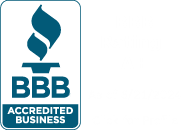Unlocking the Power of Purpose: A Guide to Defining and Refining Your Nonprofit Mission Statement
Crafting a compelling nonprofit mission statement is the first step towards effectively communicating your organization’s purpose. At BryteBridge, we understand that defining your “why” is at the heart of this process. In this guide, we’ll delve into the importance of a strong mission statement, share insights on refining it for clarity, and introduce the BryteBridge Mission Statement Generator, a tool designed to streamline this crucial task!
The Significance of a Strong Mission Statement
Your nonprofit’s mission statement is the foundation of your identity. It encapsulates your purpose, values, and goals, serving as a guiding beacon for your team and stakeholders. BryteBridge recognizes the challenges in this process, and that’s where our expertise comes in.
Introducing the BryteBridge Mission Statement Generator
Crafting a mission statement can be complicated, but BryteBridge is here to make it easier. Our Mission Statement Generator is a user-friendly tool designed to guide you through the process. With a focus on clarity and impact, this tool ensures your mission statement resonates and aligns with best practices for clarity.
The Elements of a Clear Mission Statement
- Conciseness is Key: Too much detail can be overwhelming. Focus on clarity and prioritize what’s most important. Aim for two brief sentences, leaving room for additional information about programs and target audiences in separate descriptions.
- Memorable Language: Sometimes, a single outstanding sentence can encapsulate your mission effectively. For instance, “The mission of the nonprofit Kids Teaching Kids is to inspire education and teamwork.” It’s clear, concise, and conveys the organization’s purpose.
Defining Focus for Impact
To define your purpose, identify the problem you aim to address and the change you seek. An IRS 501(c)(3) purpose statement is crucial in showcasing your organization’s charitable cause. Focusing on clarity doesn’t limit your work; it ensures a broader understanding, leading to successful outcomes.
Writing Your Purpose Statement
A purpose statement comprises an action verb defining change and identifying the problem you’re addressing. Combining these elements creates your mission statement. BryteBridge emphasizes that clarity is key at this stage, focusing on what you aim to accomplish without delving into how.
Enhancing Visibility Through Action
Consider the means through which you’ll achieve your nonprofit’s purpose. Advocacy, policy changes, grassroots campaigns, and special programs can be part of your strategy. The goal is to increase visibility and awareness of your nonprofit, connecting with your audience effectively.
Seeking Help from BryteBridge
Crafting purpose statements can be challenging, and BryteBridge is here to help. Our experts specialize in assisting nonprofits with their IRS 501(c)(3) purpose statements. Please feel free to contact us for guidance and explore our BryteBridge Mission Statement Generator for a seamless and impactful mission crafting experience. Don’t miss the opportunity to elevate your nonprofit’s messaging – try the Mission Statement Generator today!
Find Help Defining and Refining Your Nonprofit
Many nonprofits need help writing and understanding purpose statements. The experts at BryteBridge Nonprofit Solutions help nonprofits with their IRS 501(c)(3) purpose statements and more. If you have any questions or need help, contact us at BryteBridge today. Be sure to check out our excellent reviews!



